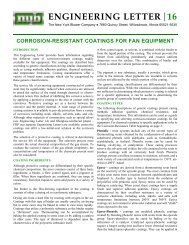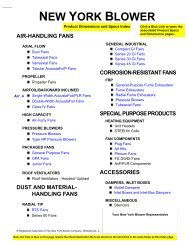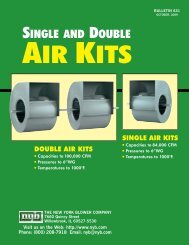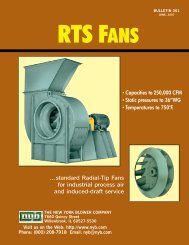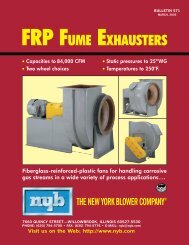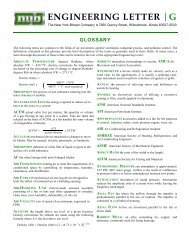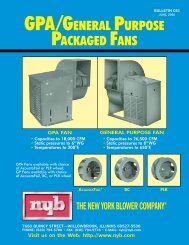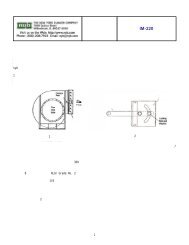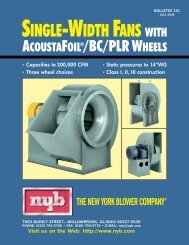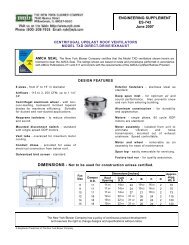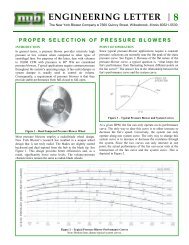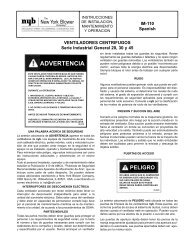Temperature and Altitude Affect Fan Selection - New York Blower
Temperature and Altitude Affect Fan Selection - New York Blower
Temperature and Altitude Affect Fan Selection - New York Blower
Create successful ePaper yourself
Turn your PDF publications into a flip-book with our unique Google optimized e-Paper software.
Figure 7 shows a system in which different temperatures areinvolved. The fan will not h<strong>and</strong>le the same volume of air whenoperating hot as it does when cold. If the burner is on, the fanwill h<strong>and</strong>le 1430 ACFM against an actual static pressure of 1.2inches. This is arrived at by adding the filter, burner, <strong>and</strong> nozzleresistance, neglecting for the sake of simplicity any externalresistance from additional ductwork. The fan would be selectedfrom the capacity tables on the basis of 1430 CFM at 1.72inches static pressure (300°F. correction factor times 1.2inches).If the burner is turned off while the fan continues to operate atthe same RPM, it is necessary to determine the systemcharacteristic curve <strong>and</strong> plot its intersection with the fan todetermine how much air the fan would move <strong>and</strong> at what staticpressure. To accomplish this we must assume an arbitrarycapacity, such as 1000 CFM at 70°F. The filter louver resistancewould be the same, cold or hot, at .3 inches 70°F. The burnerresistance would remain unchanged with temperature since it mustbe assumed that air expansion takes place after the highvelocity section of the burner. The nozzles will vary inresistance directly as the density changes <strong>and</strong> inversely as thesquare of the flow. The nozzle would then have a resistance coldat 1000 CFM of:1000.5” x ( 1430 ) 2 x 1.43 = .35”Summing these resistances yields the cold resistance at 1000CFM of 1 .05"SP. This new system point <strong>and</strong> correspondingcurve are then plotted against a fan curve at st<strong>and</strong>ard conditionssuch that the resulting intersection will be the final operatingpoint of the cold system. Using an actual fan as an example,the resulting flow would be 1220 CFM at 1.5 inches staticpressure. (See Figure 8.)Figure 8 - <strong>Fan</strong>-system curve relationship withfan at different temperatures.Figure 7 - A system with different temperatures.Page 5



